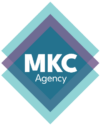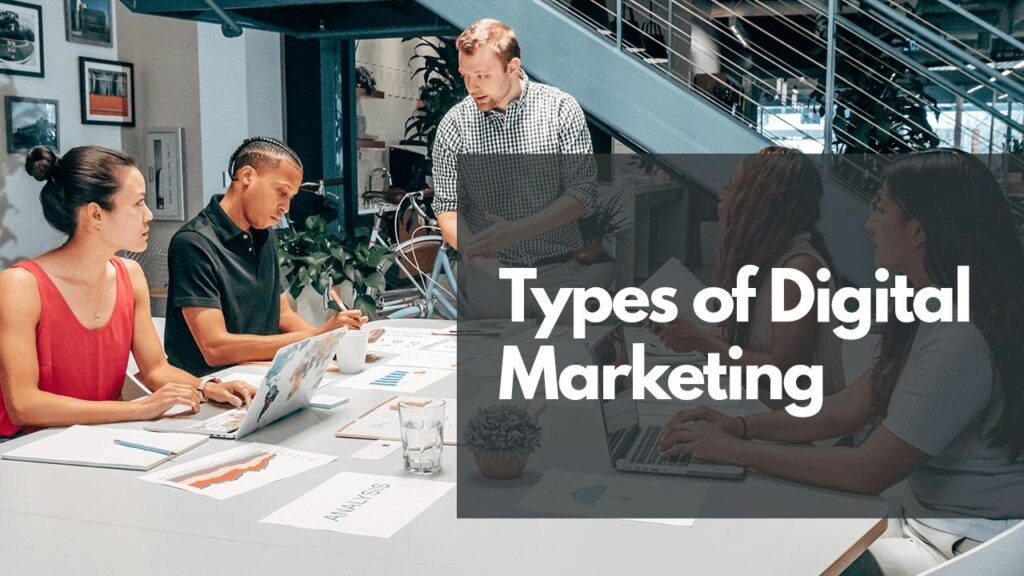Digital marketing is a multi-faceted monster. If you’re wading into the digital marketing pool wondering where to start and what to do, you’re not alone. Which channels should you be on? What do SEO and PPC really mean? What are the advantages and disadvantages of each of the different types of digital marketing? The mind boggles.
To help you out, we’re looking at the top 6 types of digital marketing. Reader be warned, the lines are blurred between the various options, but at least you’ll have a master list to choose from.
When it comes to choosing the right type for your business, the usual questions will apply: WHY do you want to use digital marketing and WHO are you trying to reach with your marketing efforts? This will help you select the right formats and channels to achieve your personal objectives.
Ready? Let’s do this.
1. Content marketing
Content marketing is just like it sounds–it involves creating and distributing content such as text, pictures and multimedia that adds value for your audience, instead of just broadcasting an advertising message. For a B2B business, ‘content’ can mean anything from social media posts and blog articles to whitepapers or reports, webinars and educational videos.
The pros of this kind of marketing are that, first of all, it’s free (in the sense that it’s about attracting customers to you and your brand instead of paying to push your message out to a cold audience). Also, content is incredibly versatile. You can use so many things to build your brand as you educate, entertain and inspire your audience; it’s what fuels all the other types of digital marketing, driving search engine optimization, social media, email, etc.
On the downside, with everyone now waking up to the importance of content and pumping out blog posts, videos and whatever else, it’s a very cluttered space that makes it hard to stand out.
In order to be effective in this space, you need to create and share consistent, high-quality content that meets the needs of your customers while also representing your brand and achieving your business objectives.
2. Search engine marketing
Search engine marketing is all about getting the most attention by getting your website to appear at the top of the results when someone searches for your brand, your products and services and other relevant words and phrases. Of course, we mean Google (let’s face it, that’s the main one) but also Bing (often installed on business computers, so good for B2B!). We want to consider both organic or natural search (search engine optimization, or SEO) and paid search (pay per click, or PPC). Let’s look at both of those.
SEO
Search Engine Optimization does exactly what it says: optimizes your content for search engines! This means creating content that people are actively searching for as well as making sure that your content, and the platforms hosting it, are optimized from a technical point of view as well. Everyone should be doing this, no matter what business or industry you’re in.
Guess what–it’s free (we love free stuff, don’t you?). When your brand appears in the organic search results, it comes across as being more ‘authentic’ and legitimate in the eyes of your customers, which builds trust in your brand and product.
Remember when we said it was free? Well, you may not have to pay specifically for the search results, but it does take time and effort to create amazing content and do the technical optimization of your website, which may have costs associated–like outsourced marketing to an experienced firm. It’s a worthy investment, however. You’re also somewhat at the mercy of Google’s ever-changing algorithms and with all the content that’s out there now, it’s very hard to rank highly in the organic results.
PPC
Pay per click is paid search advertising, for instance, Google Adwords or Bing Ads. It looks almost the same as the natural search results, except that it appears at the top of the page with a little box that says ‘Ad’ (you’ve no doubt seen those when you search for something). You can buy a top-ranking position via an auction based on keywords, geographical location and demographics—it’s especially useful for e-commerce and for local businesses.
On the one hand, PPC can quickly buy you a top ranking if you’re willing to pay for it, which is an easy, quick way to zip to the top. You also only pay when someone clicks on your ad (hence the name!).
But keep in mind that it can get expensive, especially when you’re targeting popular keywords.
Since they tend to trust the organic search results more, prospective customers are wary of paid ads and it can affect trust in your brand.
3. Display advertising
Banner ads are essentially brightly-lit billboards on the internet highway. Display advertising, also known as banners, hearkens back to the quintessential print ads you’d get in magazines, except that they are online. You can target specific publications that you know your audience reads based on their field and interests, to get maximum visibility.
Banners are effective because you can target, and re-target, customers very effectively (think of the ad you see on Facebook that pops up repeatedly on other pages for days after). With all the sophisticated software and tracking programs out there, display ads are really easy to track and allow you to measure conversion in real-time, which is incredibly helpful for your B2B business.
Unfortunately, there is such a thing as ‘ad blindness,’ where customers straight up ignore your ad to focus on the content they are trying to read instead. It’s also tricky to get the balance right between maximizing visibility and impact, so that people notice you, but not so much that they get annoyed.
4. Mobile marketing
Mobile marketing is almost as broad as digital marketing itself and will overlap with a lot of the other types, but it’s still an essential facet of your business that you should consider. In essence, mobile marketing involves doing everything you’re doing on desktop but adapting it to mobile, as well as doing mobile-specific things like in-app advertising, sending text messages, and using social messaging apps. It’s especially important if you’re targeting a younger audience who spends all their time on their phones. The last thing you want is for your banner or landing page or ad to get cut off or be badly formatted; prospects won’t wait until they can get to their desktop to engage with your content, and you’ll lose valuable engagement opportunities.
5. Social media marketing
Social media marketing is usually put front and centre in terms of marketing strategies. And it makes sense: compared to other channels like TV, print and even online display advertising, social media adds a whole new dimension of engagement and interaction. You can really interact with your customers and listen to what they have to say, opening up a two-way conversation that is compelling and captivating for users. There are all sorts of channels—Facebook, Instagram, Twitter, LinkedIn, Pinterest, YouTube, Snapchat—and options ranging from organic—for example, Facebook groups, page posts, stories and Messenger—to paid—like Facebook ads. Pretty much every business should be on at least a couple of these social channels, and the more, the merrier (when it makes sense for your business).
When done right, the time and effort you put into posting and creating content on multiple platforms can be multiplied as people like, comment on and share your content with their friends and connections. Facebook ads, in particular, have become super sophisticated and you can now target specific customer segments with your content to get your message seen by the right people. That is an amazing tool for marketing your business.
There are some challenges, though. The brains and pocketbooks behind these social channels are constantly changing their algorithms or finding new ways to make money, and it’s hard to stay on top of all these changes and to keep your marketing working effectively. What works one day may not work the next, and staying on top of the changes to pivot your strategy constantly is not an easy task. Although it may sound super simple to do a bit of posting on social media, you definitely need a solid, well-crafted strategy and a lot more time than you think to do it properly and consistently. This is definitely a job for the pros.
6. Email marketing
Ah, emails. They flood into your inbox all day, advertising deals and tempting you with exclusive offers.
Email may seem a little old school (in a world where everyone is instant messaging or Snapchatting), but email marketing remains one of the most effective digital marketing tools. E-commerce sites and retail brands are kings in this space, and see a lot of success with pushing seasonal promotions and discounts (think Black Friday deals or Mother’s Day). You can also use email newsletters to ‘nurture’ your prospects by giving them a lot of value beyond just pushing your products and services.
Most businesses already have an email list of prospects and connections. That means you can stay in touch with your followers independently of any pesky changing algorithms that can, say, shut down a Facebook group or take down existing targeted ads. Staying in regular contact with your email list will help you build relationships and will keep you ‘in the headlights’ when they’re ready to buy
For this strategy, you have to have a squeaky-clean email list and really optimize your messages with catchy subject lines to grab attention. Otherwise, your message will either sit unopened or end up in the trash. Even if someone responds to an email or opens it, you’ll still need to find a way to keep adding value so that they stick with you and don’t unsubscribe soon after.
So that sums up many of the digital marketing strategies that you can consider for your business. Word to the wise: don’t try to do everything as you’ll end up exhausting yourself and doing nothing very well! Think about what you’re trying to achieve, who your audience is and where they’re active…and then pick a couple of marketing styles to get started.
Want to reach your audience in an effective way, but not sure what marketing channels to use? Need help with some of the campaigns you have currently active? We can help you with that! Megan Killion Consulting is a team of dedicated, experienced professionals who are equipped to meet your specific targets and get you the leads you want. Give us a shout, and we can start working together to meet your unique business needs.

